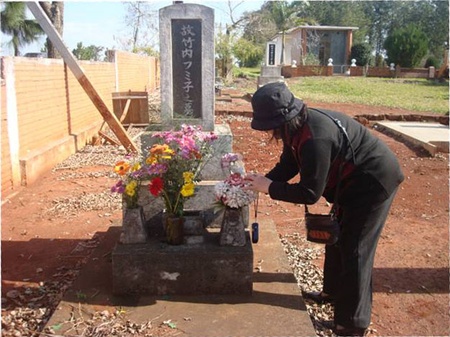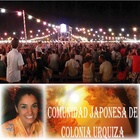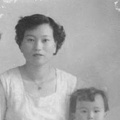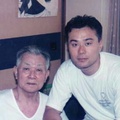Read Part IX (Part 1) >>
Marriage ceremony.
The two main streams of religion are Buddhism, which was introduced to the country in the 6th century, and Shintoism (Shintoism) which evolved as a people's religion. 1 Buddhism has greatly influenced Japanese politics and culture. Shintoism, meanwhile, has survived in the form of traditional beliefs and customs, and in practices such as individual prayers, various rites and festivals. Usually, births and marriages are celebrated by the Shinto rite, and funerals and funeral commemorations are celebrated by the Buddhist rite. 2
Unlike most Western ceremonies, the Japanese wedding ceremony is strictly for family and a few friends. Among some symbols that remain in force are: the bride wears a white kimono, but she can also use different colors, unlike the groom, who always wears a black kimono.
According to the Japanese religion, Shinto (Shintoism), ceremonies begin with a purification ritual, or shubatsu. First the guests and the bride and groom's family enter, then the bride and groom and, finally, the master of ceremony. The bride and groom exchange a rosary, in Japanese or juzu. In the past, rings were not used, today this formality was incorporated. Then comes the main moment of the ceremony, which is drinking sake to seal the couple's union. This ritual is known by the name san san kudo which means “three-three-nine”; three represents Heaven, Earth and the Human Being. The odd number three is indivisible and nine is the maximum of the odd number.
Through this ritual, the desire for maximum happiness and eternal union of the new couple is expressed, for which a series of small cups, in Japanese sakazuki , are prepared, large, medium and small mounted one on top of the other, and in a certain order the bride and groom drink sake. Once this ritual is over, the couple expresses their word of oath, and then the master of ceremony ends the ritual. Next comes the party (Hirou no Gui), where the union of the couple is celebrated along with their family and guests. The bride changes her traditional Japanese dress for a white dress and a tailcoat for the groom, with the attraction of the meeting being karaoke. It has also been seen lately that, attracted by a Western wedding trend, tours have been organized to get married abroad and the most visited places are nearby countries, choosing Hawaii or Italy.
Through testimonies we have recorded the marriage of a young Argentine Nisei, married by both rituals, the Western one in Argentina and the Japanese one in Japan; or that of a Paraguayan first-born Nisei, who traveled to Japan in search of a husband and only performed a Japanese ritual, where the husband took her last name; or that of the sister of this Paraguayan Nisei who married another Paraguayan Nisei, with an oriental ceremony, with several changes of outfit and karaoke (not only did the diners enjoy typical Japanese foods but also delicious Paraguayan dishes). There is another case of an Argentine Nisei who married a Peruvian Japanese man, and they performed the Catholic religious ceremony in Argentina and the Japanese religious ceremony in Peru. There are few cases of racial exchange, that is, one of the two that does not have Japanese blood: for example the case of a first-born Argentine Nisei with an Argentine woman of Italian-Paraguayan parents, in which only a Catholic religious ceremony and party in the style were held. western; In another case, a Japanese descendant with an Italian descendant held a Western-style religious ceremony and party and the common thing was barbecue as the main dish, some oriental snacks and the celebrations were: tango or folklore shows or dances like the carioca or carnival, qualifying with karaoke. It is also common to give a sealed envelope with money, instead of gifts, to help with wedding expenses.
The Funerals.
As for the death ceremony, in the Japanese tradition, a vigil is held with the body present and acquaintances and relatives attend, giving the family an envelope with money to help with expenses, and after 40 days a family reunion is held, where before a photo or an urn of ashes, a tribute is paid, possibly with a monk who recites prayers and another meeting is held each year to bid farewell to the spirit of the deceased. Differences can be established depending on the expenses required by funerals; Currently in Japan, families usually plan everything concerning the deceased according to their purchasing power.
Until the 19th century, tombs were controlled by temples or communities
regional. Currently, cemeteries are managed by local governments, and since 1960, private cemeteries have increased. The practice of cremation occurs in almost all cases, because Japan does not have space to bury its dead; For this reason, the construction of cemeteries for burials is insignificant. Most of the tombs are used to store ashes, and each tomb can accommodate several cinerary urns.
Funeral expenses are quite expensive, you must pay the funeral company, the temple and the reception service (and even the pagoda-style floats). In Japan there is a mutual aid system, it involves cash donations from people who attend the funeral. A Buddhist priest usually officiates the reading of sutras.
At the end of this ceremony, the main member of the funeral procession says goodbye to the attendees, thanking them for their presence, then the closest relatives move to the crematorium and once the cremation is completed, they return to the house to celebrate a dinner in honor of the deceased. At that time the funeral and service concludes. In Buddhism, ceremonies are held 7, 35 and 49 days after death, to comfort the spirit of the dead. Usually, after the 49-day ceremony, the ashes are kept in a tomb.
In Argentina, the wake can be held in a funeral home or in the Japanese Association club, where all the preparation is carried out by a company. Those who attend, family and friends, give a donation to help the family, who thanks them with a present during the week. Mourning is usually held for a period of a few days. After forty-nine days a ceremony is held and a year later the deceased is bid farewell for the last time, with prayers and presents before a photograph if he has been buried, or before the cinerary urn.
As a summary.
We have gone through several milestones in the life of a human being: his birth, marriage and death, observing how the Japanese people manifest themselves and some cases of emigrants, who maintain certain customs and rituals abroad, but also adopting those of the receiving country.
Grades:
1. Information consulted and extracted from the following authors: Lanciotti, Lionello: Confucio. s/d page 1-15 and Fo Guang Shan (trans.) What is Buddhism? Buenos Aires, IBPS Argentina, 2005. page. 1-49.
2. Velloso de Santisteban, Agustín: The educational system in Japan, Ed Labor. Barcelona. 1994
© 2014 Irene Isabel Cafiero










